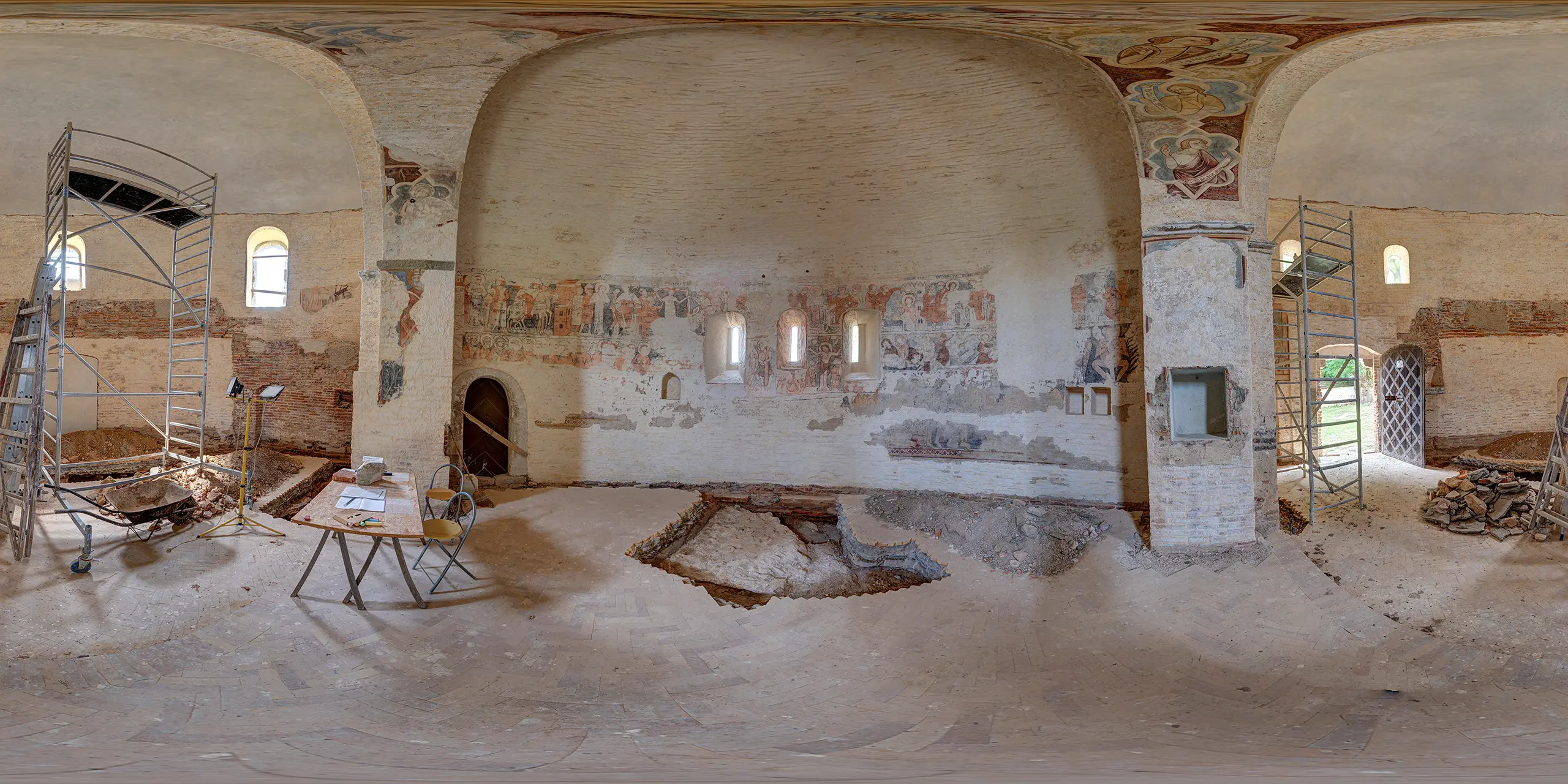
Šivetice
Šivetice
A brick Romanesque church dedicated to St. Margaret of Antioch was built in the middle of the 13th century on the hill above the village of Šivetice. The church has the shape of a rotunda with an internal diameter of 11 metres and is one of the largest buildings with a circular plan in Central Europe. During the 14th century, the interior of the church was divided into a nave and a sanctuary by a monumental broken triumphal arch. In the 18th century, the church was partially rebuilt in the Baroque style. A bell tower with an entrance gate was built into the old stone enclosure. Today there is a cemetery in the immediate vicinity.
The original Romanesque wall paintings with scenes from the legend of St. Margaret were covered with Gothic paintings with the same theme and supplemented with scenes from the Passion cycle. Two layers of paintings were uncovered in 1911 by the Budapest restorer István Groh.
Draw your attention to these wall paintings
Frescoes with motifs from the life of St. Margaret of Antioch
The most precious Romanesque paintings of the sanctuary depict scenes of the life and martyrdom of St. Margaret, a young Christian woman from the city of Antioch in Syria, located in the upper band of the paintings. When she refused to marry the local ruler, Olybrius, who forced her to invoke pagan gods, he had her imprisoned and tortured. Since even then she would not renounce her Christian faith, Olybrius had her beheaded. The cult of St. Margaret of Antioch was strengthened in Hungary by King Andrew II when he returned from the Crusade to the Holy Land and brought back a relic of St. Margaret. An extraordinary element of the fresco is the original form of the Šivetice rotunda with a red tiled roof topped with a brick tambour (a circular tower with windows), which was removed during the Baroque renovation of the church. The original Romanesque frescoes with motifs of the legend of St Margaret were covered with Gothic paintings with the same theme and supplemented with scenes from the Passion cycle.
Crucifixion in the second strip of paintings
The interior of the apse in the lower band is covered with several considerably damaged wall paintings with motifs of the Passion cycle. The fresco depicting Christ on the cross is the best preserved.
St. Michael the Archangel weighing souls
The sanctuary of the rotunda hides fragments of important wall paintings from the Gothic phase of the painting the church. The best-preserved painting depicts St Michael the Archangel weighing souls. On one side of the scales we see figures of demons with heavy mill wheels, but these are outweighed by a human figure with ordinary bread.



